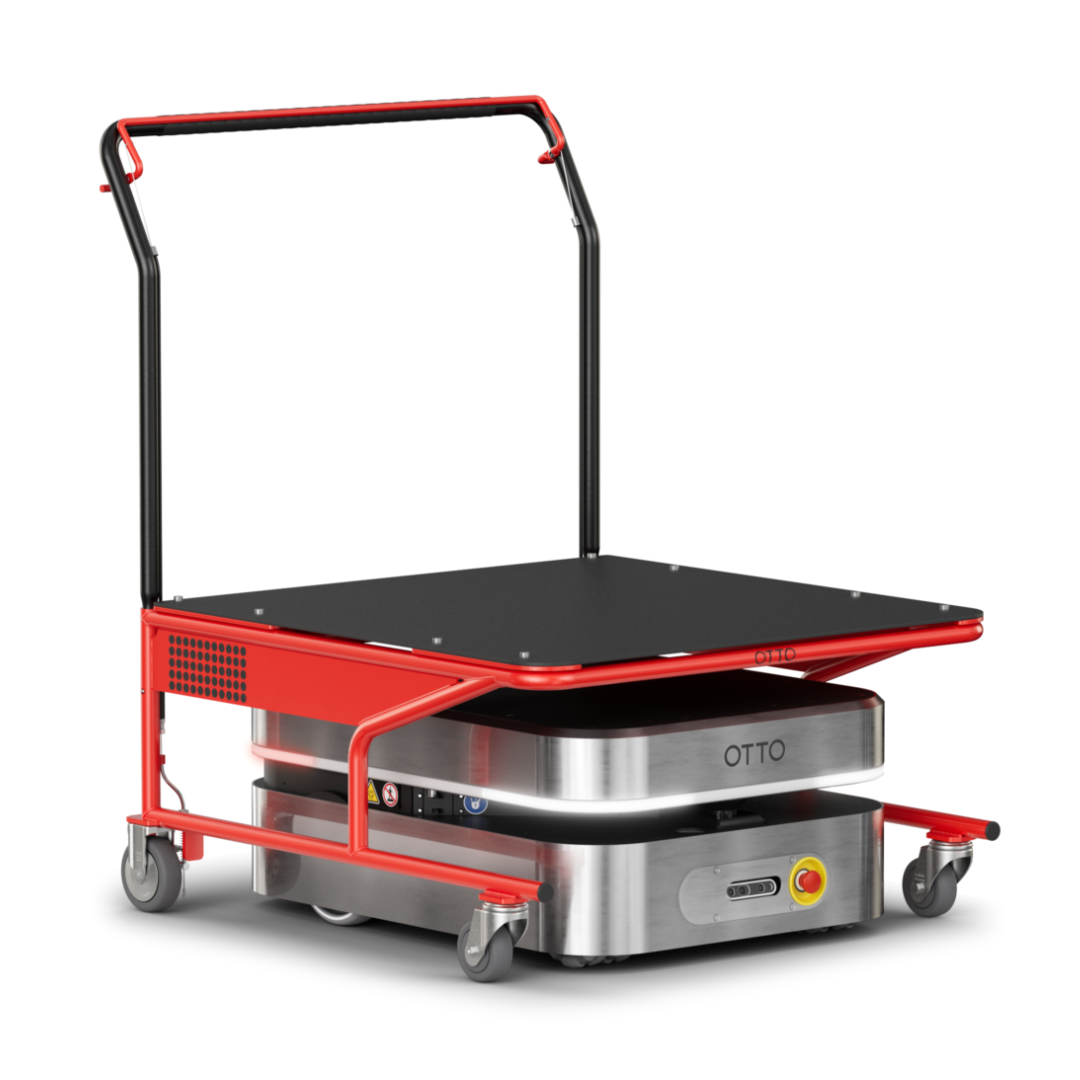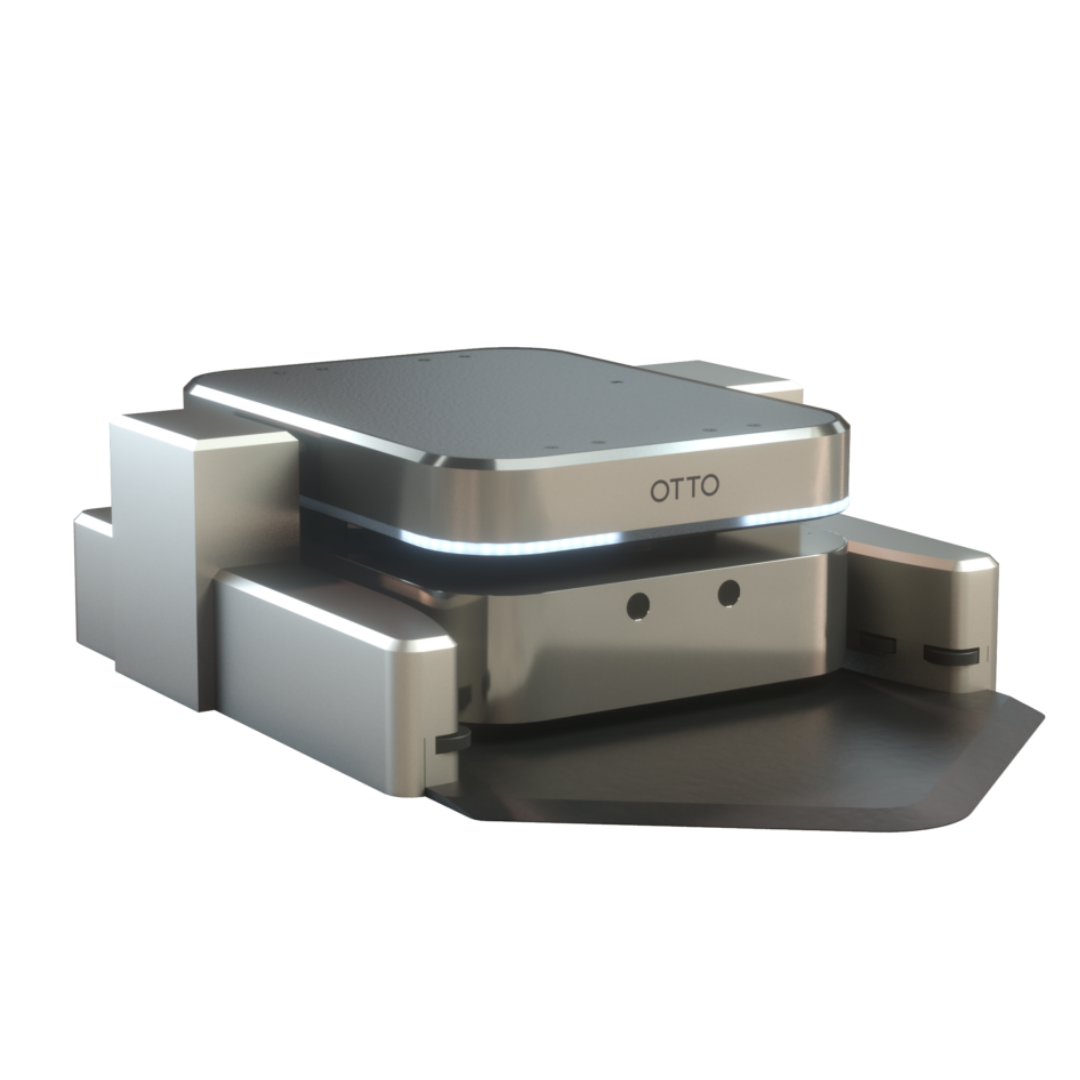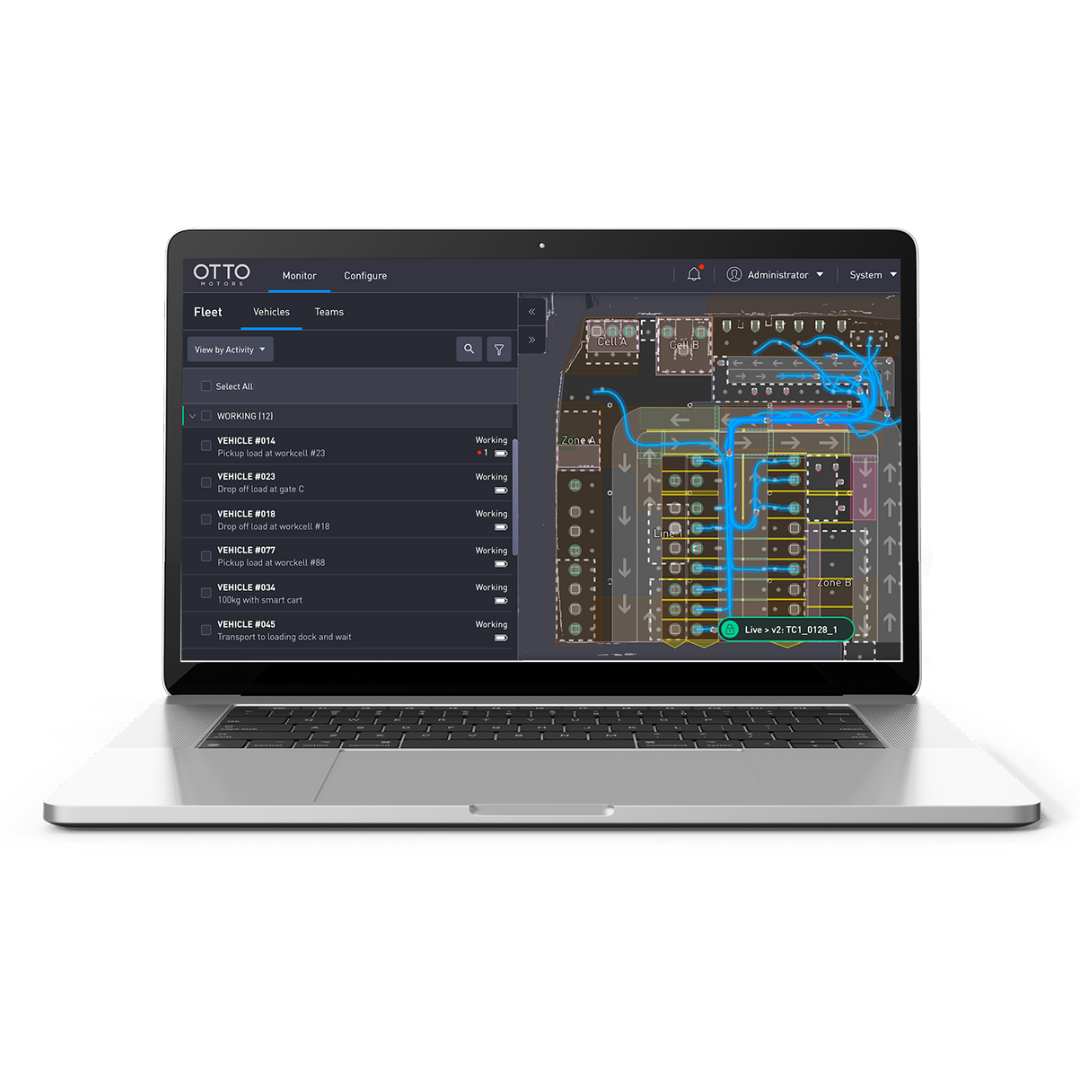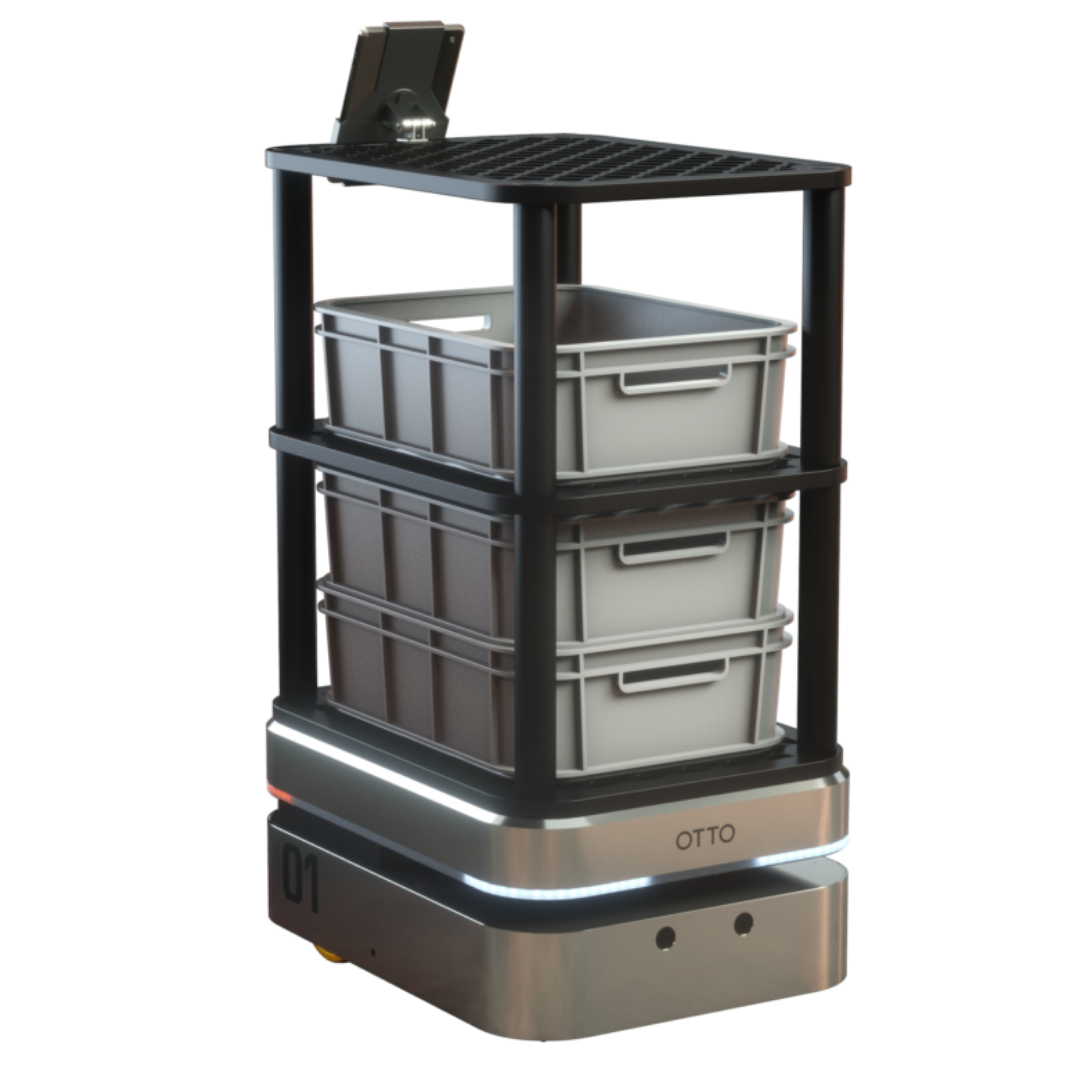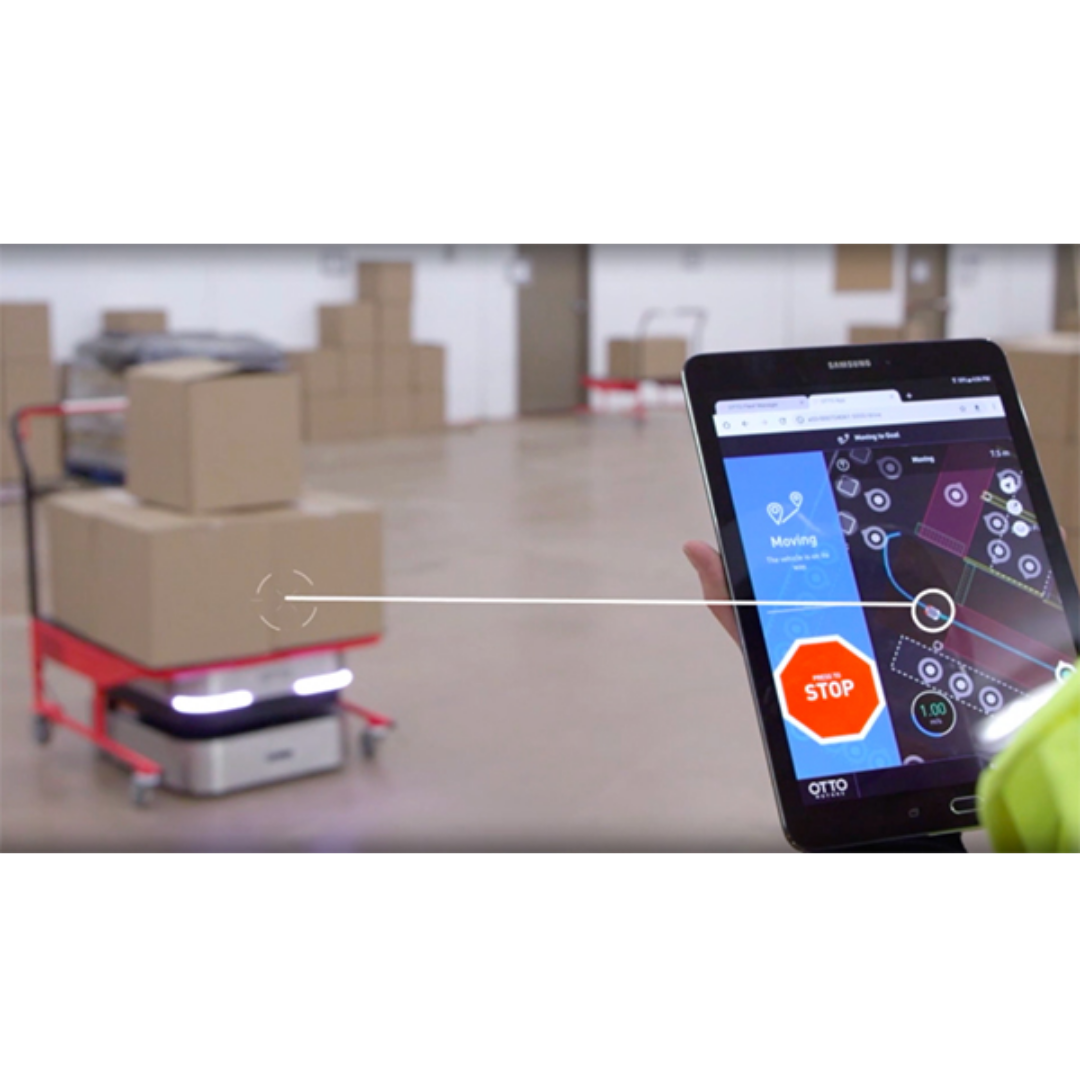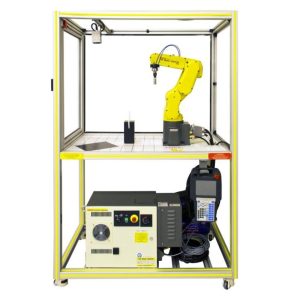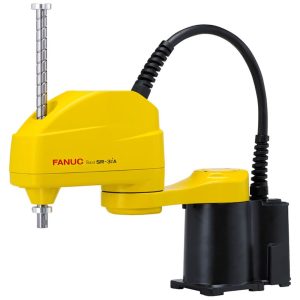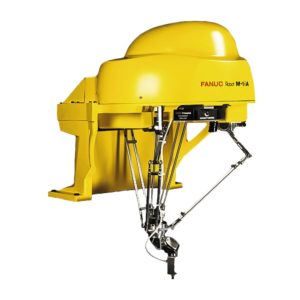The future of material handling is autonomous!
The OTTO 100 is a powerful autonomous mobile robot (AMR) that gives students access to the same smart logistics technology used in advanced manufacturing and distribution environments. Loaded up with smart sensors and navigation tools, powered by intelligent fleet management software, and with capabilities to integrate with other automation technologies, the OTTO 100 teaches core principles of automation, robotics, logistics, and Industry 4.0.
Backed by parent company Rockwell Automation – this global leader in industrial automation is the perfect fit for any industrial technology program preparing students for careers in automation and Industry 4.0.
Learning Outcomes
Autonomous Navigation
Students will explore how AMRs move through dynamic environments using LiDAR, cameras, and onboard sensors. They’ll learn path planning, map creation, and how obstacle avoidance keeps robots safe around people.
Industrial Robotics Programming
Learners will configure AMRs for specific tasks, manage routes, and define operating zones using OTTO’s intuitive software. This includes exposure to API-based controls and real-time workflow adjustments.
Smart Logistics & Material Handling
Students will examine how AMRs improve supply chain operations. They’ll model pick-up/drop-off tasks, analyze throughput efficiency, and design layouts for optimized goods movement.
Fleet Management & Systems Integration
OTTO Fleet Manager offers a gateway into Industry 4.0. Students will manage multiple robots, assign workflows, monitor performance data, and simulate real-world plant operations.
Safety & Compliance
Learners will study the standards and protocols that govern human-robot interaction, from sensor-based collision prevention to zone-based permissions and safe stop functions.
Cross-Disciplinary Skills
The OTTO 100 introduces concepts in industrial automation, systems thinking, IoT, and digital manufacturing—making it valuable for students in engineering, robotics, logistics, and computer science.
Instructor Resources & Training
Instructor training and support are available through OTTO, with onboarding training options, as well as videos and support documentation.
OTTO 100 Details
- Autonomous transport of payloads up to 150 kg (331 lbs)
- Compact size: 740 x 550 x 308 mm (29.1 x 21.7 x 12.1 in)
- Turns in place for tight-space maneuverability
- Built-in laser scanners and 3D cameras for obstacle detection and navigation
- Rugged all-metal chassis for industrial durability
- Runtime of up to 6 hours, with 18-minute charge time from 10% to 90%
- Integrated with OTTO Fleet Manager software for mission control, workflow design, and API connectivity
- Connectivity via WiFi, USB, Ethernet, RS-232
Available Accessories
- Staging Cart – Carries payloads up to 130 kg with guided loading/unloading
- Autonomous Supercharger – Delivers 98 A for rapid charge cycles
Create intelligent workflows with Fleet Manager software
Create maps, generate workflows, gather data and optimize systems with Fleet Manager software, included with your OTTO autonomous mobile robot.
Along the way, your students will learn how artificial intelligence can generate better maps and more efficient workflows.
Built-in smart sensors enable the AMR to navigate the most dynamic environments
3D cameras (front and back) support autonomous navigation and assist in detecting overhanging objects
Differential drive wheels provide agility and speed in crowded and dynamic environments
LiDAR detects surrounding objects and estimates distance for safe and efficient operations
Integrate with other technologies to simulate an authentic industrial application
Use the OTTO staging cart to move material from point-to-point.
Or, integrate with any number of other technologies – collaborative robots, conveyors – to create a fully autonomous material handling application.

